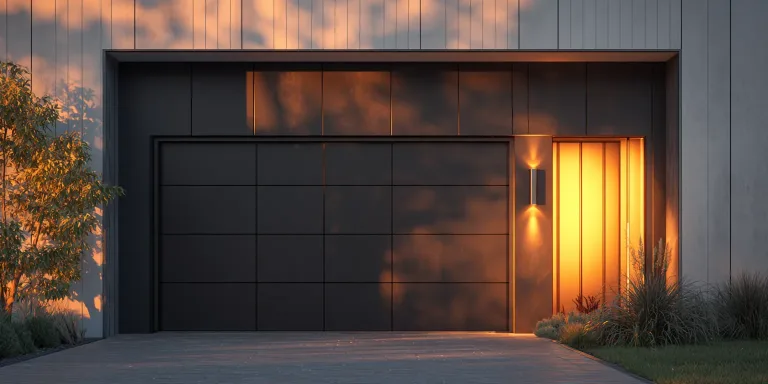Grand Slam in Tennis: What It Is and Major Tennis Tournaments
Four championships. Four surfaces. Ultimate tennis supremacy. The Grand Slam embodies the sport’s absolute zenith – capturing all four premier tournaments within one calendar year stands as one of athletics’ most elusive accomplishments.
Defining Grand Slam
Grand Slam denotes capturing all four premier tennis championships within twelve months. The quartet comprises the Australian Open, French Open, Wimbledon, and US Open. Accomplishing this in singles mandates exceptional adaptability across disparate surfaces and circumstances.
The designation “slam” migrated from contract bridge before tennis appropriated it during the 1930s. Seizing all four premier crowns became interchangeable with absolute supremacy in professional tennis.
Career Grand Slam characterizes capturing all four majors at any juncture during a career, not mandatorily within twelve months. This feat still occupies tennis’s most esteemed accomplishments, necessitating command across clay, grass, and hard court terrains.
Golden Slam appends an Olympic gold medal to the four premier crowns within one calendar year. Merely one competitor has accomplished this exceptional achievement in singles rivalry – the scarcity emphasizes its formidability.
Non-calendar year Grand Slam signifies grasping all four premier crowns concurrently but not within a solitary calendar year. Capturing four sequential majors spanning two years still exhibits remarkable sustained brilliance.
Australian Open Profile
The Australian Open inaugurates the Grand Slam calendar each January. Melbourne Park accommodates this hard court championship during the Australian summer. Extreme temperatures frequently test competitors, with thermometers surpassing 40°C (104°F) habitually.
The championship transitioned from grass to hard courts in 1988. Rebound Ace originally coated the courts before Plexicushion supplanted it in 2008. The contemporary surface operates moderately swift, privileging aggressive baseline combat.
Rod Laver Arena functions as the principal exhibition court, showcasing a retractable canopy installed in 2000. This permits combat to persist during precipitation or extreme temperatures. The venue accommodation attains 14,820, rendering it one of tennis’s most colossal stadiums.
Monetary rewards have escalated dramatically. The 2024 championship allocated over AUD 86 million in aggregate monetary rewards. Singles victors obtained AUD 3.15 million each, mirroring the gathering’s distinction and commercial triumph.
Time zone disparities manufacture distinctive viewing obstacles for European and American spectators. Contests frequently transpire during nocturnal hours in those territories, influencing television evaluations but manufacturing distinctive late-night tennis environment.
French Open Characteristics
The French Open transpires at Roland Garros in Paris each May and June. Crimson clay courts characterize this championship – the solitary Grand Slam contested on this terrain. Clay dramatically decelerates sphere velocity and manufactures elevated rebounds, compensating defensive aptitudes and physical stamina.
Construction of clay courts necessitates scrupulous preparation. Pulverized brick manufactures the competing surface, which receives watering, compressing, and sweeping daily. Maintenance brigades labor perpetually sustaining optimal court circumstances throughout the fortnight.
Customarily, no canopy sheltered the principal courts. Philippe-Chatrier Court obtained a retractable canopy in 2020, permitting nocturnal segments and shelter from precipitation postponements. This modernization augmented spectator occurrence while sustaining the locale’s heritage personality.
The championship’s French designation endures despite international spectators. “Roland Garros” venerates a pioneering aviator who perished during World War I. The stadium bearing his designation inaugurated in 1928, cementing the association.
Wagering platforms like DBbet furnish comprehensive markets on French Open confrontations, capitalizing on clay court authorities and surface-particular form examination that diverges substantially from alternative Grand Slam championships.
Wimbledon Tradition
Wimbledon occupies tennis’s most ancient and prestigious championship. The All England Lawn Tennis and Croquet Club accommodates this grass court tournament each June and July. Rigid customs distinguish Wimbledon from alternative majors.
Grass courts manufacture the swiftest competing surface in professional tennis. Diminished sphere rebounds and rapid court velocity privilege serve-and-volley maneuvers and offensive combat. Sustaining natural grass throughout a two-week championship demands exceptional groundskeeping proficiency.
White garment regulations persist rigorously implemented. Competitors must don predominantly white clothing with minimal chromatic embellishments. This custom originating from tennis’s amateur epoch endures despite contemporary professional tennis’s commercial character.
The sovereign container accommodates distinguished visitors including British sovereign clan constituents. Competitors genuflect when traversing the sovereign container on their trajectory to Centre Court – a motion sustaining centuries-ancient etiquette.
Monetary rewards receive proclamation in British currency. The 2024 singles victors each obtained £2.7 million. Aggregate prize reservoir surpassed £50 million, mirroring Wimbledon’s standing as tennis’s most affluent tennis tournament despite its customary environment.
Strawberries and dairy represent Wimbledon’s culinary custom. Approximately 166,000 servings receive consumption during the fortnight, alongside 303,000 vessels of tea and coffee. These customs augment the gathering’s distinctive British personality.
US Open Dynamics
The US Open terminates the Grand Slam calendar each August and September. The USTA Billie Jean King National Tennis Center in New York accommodates this hard court championship. Flushing Meadows’ metropolitan configuration manufactures distinctive environment compared to alternative majors.
DecoTurf hard courts operate relatively swift, though not as expeditious as grass. The acrylic surface yields consistent rebounds, compensating power and offensive baseline combat. Court velocity has oscillated across decades through surface alterations.
Nocturnal segments under Arthur Ashe Stadium illumination generate electric environments. The retractable canopy installed in 2016 eradicated meteorological postponements on the principal court. Nocturnal confrontations in New York convey particular intensity with partisan assemblages.
Equivalent monetary rewards for males and females commenced at the US Open in 1973 – decades before alternative Grand Slams pursued. This pioneering verdict mirrored American perspectives toward gender parity in athletics.
Clamor from aircraft and assemblages manufactures demanding circumstances. LaGuardia Airport’s adjacency signifies aircraft routinely traverse overhead during exchanges. The boisterous New York assemblages juxtapose with Wimbledon’s reserved spectators, manufacturing polarizing environment.
Surface Distinctions
Commanding all three terrains – clay, grass, and hard courts – differentiates adequate competitors from all-epoch luminaries. Each terrain mandates disparate aptitudes, tactics, and physical characteristics.
Clay courts decelerate sphere velocity dramatically. Exchanges prolong longer as defensive retrievers pursue strikes that would constitute victors on swifter terrains. Physical stamina becomes paramount. Sliding footwork distinctive to clay necessitates particular conditioning.
Grass courts accelerate sphere velocity while yielding diminished, skidding rebounds. Serve-and-volley maneuvers historically commanded grass, though contemporary baseline power has pivoted tactics. The terrain deteriorates throughout championships as grass erodes, transforming competing circumstances.
Hard courts inhabit the intermediate territory. Sphere velocity and rebound elevation descend between clay and grass extremes. Hard courts compensate consistent baseline power and locomotion. Most professional championships employ hard courts, rendering familiarity with this terrain vital.
Tournament Structures
Grand Slam championships showcase 128 singles competitors in principal draws – 104 direct admissions plus 16 qualifiers and 8 wild cards. Seven cycles differentiate admission from championship, necessitating sustained brilliance across two weeks.
Best-of-five arrangements for males versus best-of-three for females manufactures controversy. Traditionalists champion the configuration while critics contend for parity. The physical mandates differ substantially, influencing confrontation durations and recuperation prerequisites.
Seeding shields premier competitors from encountering early. The premier 32 competitors obtain seeds, theoretically maintaining them differentiated until subsequent cycles. Surprises and afflictions habitually scramble these projections, manufacturing bracket tumult.
Doubles rivalries operate alongside singles. Males’ doubles, females’ doubles, and combined doubles all distribute Grand Slam crowns. Some singles authorities bypass doubles to preserve vitality, while alternatives embrace the supplemental competitive windows.
Historical Significance
Grand Slam accomplishments characterize tennis inheritances. Career Grand Slam membership differentiates all-epoch luminaries from merely exceptional competitors. The handful who’ve captured all four majors inhabit tennis’s most exclusive association.
Calendar year Grand Slams persist exceedingly scarce. Merely five competitors have accomplished this in singles – two males and three females spanning tennis chronicle. The physical and psychological mandates of capturing four sequential majors in one year manifest almost superhuman.
Youngest and eldest victors at each major convey historical importance. Precocious adolescents who subjugate majors exhibit exceptional maturity. Veterans prolonging vocations to seize late-vocation slams exhibit remarkable durability.
Sequential crowns at individual majors exhibit sustained supremacy. Defending victors confront enormous coercion and intense targeting from voracious challengers. Triumphant defenses authenticate championships as aptitude rather than fortune.
Economic Impact
Grand Slam championships generate colossal economic motion. Host municipalities profit from tourism, hospitality, and media focus during championship fortnights. Economic influence examinations habitually exhibit hundreds of millions in territorial advantages.
Television privileges command astronomical charges. Broadcasting arrangements span numerous years and allocate Grand Slam tennis internationally. The discipline’s international magnetism renders these championships valuable media possessions.
Sponsorship revenue buttresses championship operations and monetary reward escalations. Corporate alliances with Grand Slams furnish brands international visibility and correlation with athletic brilliance.
Monetary reward expansion mirrors tennis’s commercial triumph. Aggregate prize reservoirs have escalated exponentially across decades. Equivalent compensation disputes between males and females periodically resurface despite most majors presently furnishing identical monetary rewards.
Player Demands
Grand Slam coercion diverges from customary championships. The magnitude of chronicle, escalated media focus, and physical mandates manufacture distinctive psychological obstacles. Mental resilience frequently dictates conclusions as substantially as physical aptitudes.
Preparation for majors commences months beforehand. Conditioning camps concentrate on constructing stamina for potential five-arrangement skirmishes. Surface-particular preparation intensifies before each major, especially for clay court authorities preceding the French Open.
Recuperation between confrontations becomes decisive. Two-week championships examine physical resilience. Administering minor afflictions while persisting rivalry necessitates meticulous medical buttress and anguish administration.
Vocation scheming frequently revolves around culminating for Grand Slams. Some competitors sacrifice customary championship conclusions to materialize refreshed at majors. This tactic hazards ranking markers but prioritizes the championships that characterize inheritances.
Understanding Slam Significance
Grand Slam characterizes tennis accomplishment. These four championships – Australian Open, French Open, Wimbledon, US Open – occupy above all alternative rivalries in distinction, chronicle, and competitive intensity.
A tennis tournament becomes “grand” through durability, custom, and the victors coronated there. Capturing Grand Slam crowns elevates competitors into tennis perpetuity. Chronicles at majors outlast recollections of alternative triumphs.
The tennis Grand Slam notion transcends individual championships. It embodies ultimate command across terrains, circumstances, and competitive coercions. Extremely few attain this zenith, guaranteeing its position as athletics’ ultimate examination.
Comprehending what constitutes a slam – whether calendar year, vocation, or non-calendar – assists contextualizing accomplishments. Each variation exhibits remarkable aptitude, yet the calendar year Grand Slam persists tennis’s Everest.





